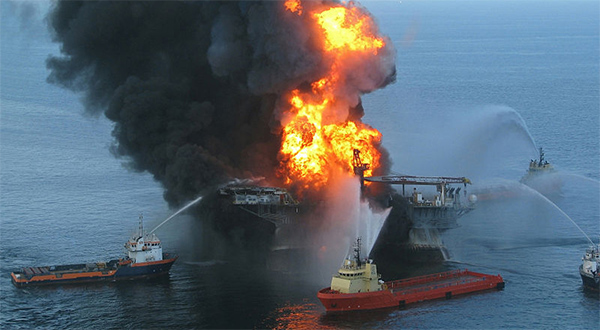The Deepwater Horizon oil spill in the Gulf of Mexico in 2010 is one of the most studied spills in history, yet scientists haven’t agreed on the role of microbes in eating up the oil. Now a research team at the Department of Energy’s Lawrence Berkeley National Laboratory has identified all of the principal oil-degrading bacteria, as well as their mechanisms for chewing up the many different components that make up the released crude oil.
During the lab study, entitled “Simulation of Deepwater Horizon oil plume reveals substrate specialization within a complex community of hydrocarbon-degraders,”, the scientists simulated the conditions of the Gulf of Mexico oil spill and were able to understand the mechanisms for oil degradation from all of the principal oil-degrading bacteria that were observed in the original oil spill.
After the initial explosion, that released of 4.1 million barrels of crude oil in the ocean, researchers observed a phenomenon that had not been seen before: More than 40 percent of the oil, combined with an introduced chemical dispersant, was retained in a plume nearly 100 miles long at this great depth.
Berkeley Lab microbial ecologist, Gary Andersen, and his team returned to the spill location four years later to collect water at depth. Over the next 64 days, the composition of the microbes and the crude oil were intensively studied.
The researchers witnessed an initial rapid growth of a microbe that had been previously observed to be the dominant bacterium in the early stages of the oil release, but which had eluded subsequent attempts by others to recreate the conditions of the Gulf of Mexico oil plume.
Through DNA sequencing of its genome, they were able to identify its mechanism for degrading oil. They gave this newly discovered bacterium the tentative name of Bermanella macondoprimitus based on its relatedness to other deep-sea microbes and the location where it was discovered.
The team used newly developed DNA-based methods to identify all of the genomes of the microbes that used the introduced oil for growth along with their specific genes that were responsible for oil degradation. Many of the bacteria that were identified were similar to oil-degrading bacteria found on the ocean surface, but had considerably streamlined sets of genes for oil degradation.
Early work on microbial activity after the oil spill was led by Berkeley Lab’s Terry Hazen, which provided the first data ever on microbial activity from a deepwater dispersed oil plume. While Hazen’s work revealed a variety of hydrocarbon degraders, this latest study identified the mechanisms the bacteria used to degrade oil and the relationship of these organisms involved in the spill to previously characterized hydrocarbon-degrading organisms.
“We now have the capability to identify the specific organisms that would naturally degrade the oil if spills occurred in other regions and to calculate the rates of the oil degradation to figure out how long it would take to consume the spilled oil at depth,” Andersen said.
Andersen noted that it is not clear if the degradation of oil at these depths would have occurred in other offshore oil-producing regions, as the Gulf of Mexico is home to one of the largest concentrations of underwater hydrocarbon seeps, and it has been speculated that this helped in the selection of oil-degrading microbes that were observed in the underwater plumes.
Although the well drilled by the Deepwater Horizon rig was one of the deepest of its time, new oil exploration offshore of Brazil, Uruguay, and India has now exceeded 2 miles below the ocean surface. By capturing water from these areas and subjecting them to the same test, it may be possible in the future to understand the consequences of an uncontrolled release of oil in these areas in greater detail.
“Our greatest hope would be that there were no oil spills in the future,” Andersen said. “But having the ability to manipulate conditions in the laboratory could potentially allow us to develop new insights for mitigating their impact.”
This research was funded by the Energy Biosciences Institute, a partnership led by UC Berkeley that includes Berkeley Lab and the University of Illinois at Urbana-Champaign. Other study co-authors were Eric Dubinsky, Lauren Tom, Christian Sieber, and Jian Wang of Berkeley Lab, and Alexander Probst of UC Berkeley.































































